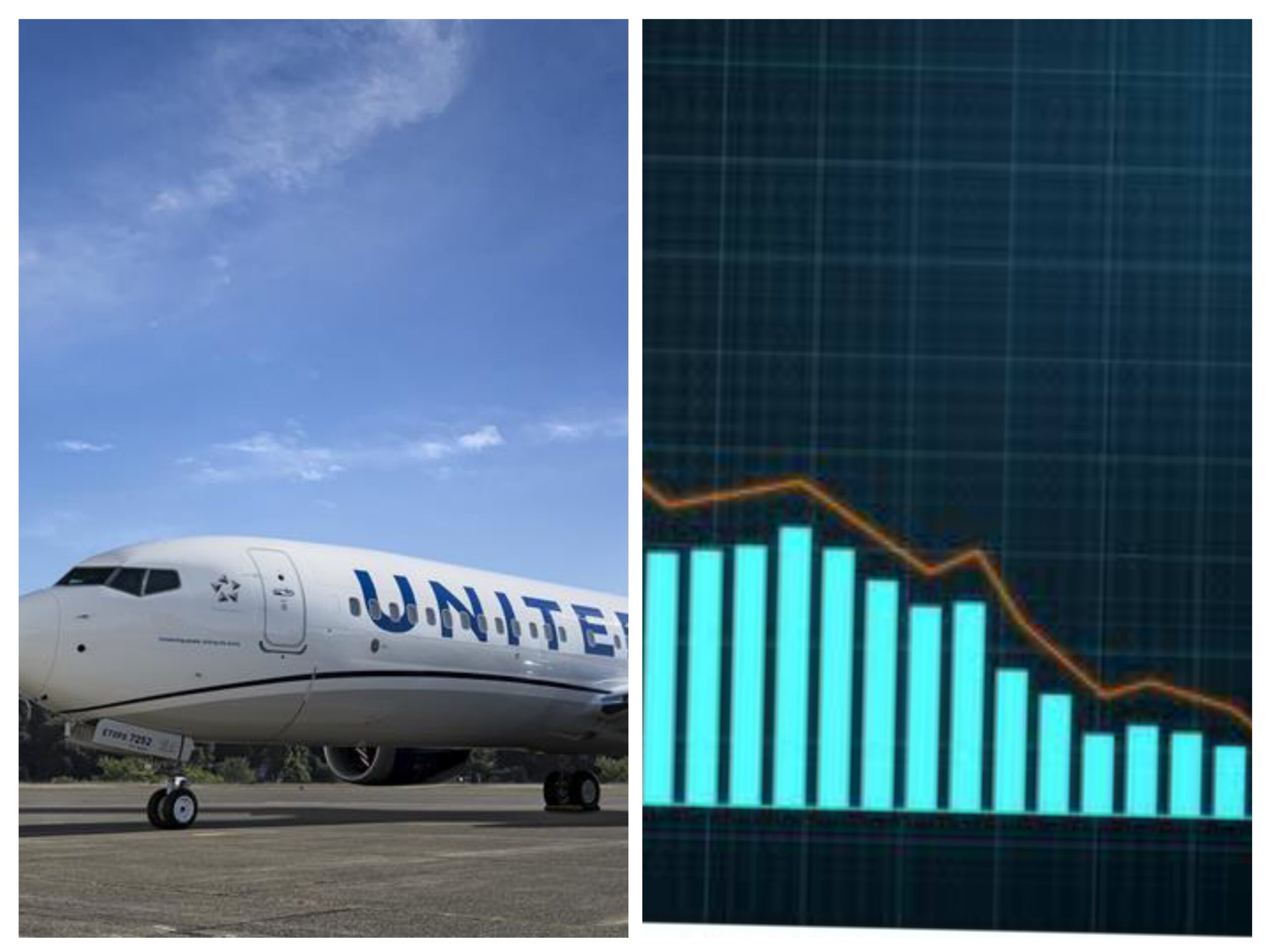United Airlines loses $194m in Q1, international travel demand returns
United Airlines lost $194 million during the first quarter of 2023, in line with previous estimates, as the carrier’s post-Covid-19 recovery continues.
The Chicago-based airline said on 18 April that its revenue during the period ending on 31 March climbed 51% year-on-year to $11.4 billion. Costs, however, also rose, driven up 28% due partly to sharp increases in jet fuel and personnel expenses.
But United reports “strong international demand” and expects to post a profit during the second quarter, when the traditionally busy summer travel season begins spooling
Our industry-leading operational performance contributed to an all-time-high operating cash flow in the first quarter and keeps us on track to achieve our cost targets for the full year,” says chief executive Scott Kirby. “We are watching the macroeconomic risks carefully, but demand remains strong, especially internationally, where we are growing at twice the domestic rate.”
The airline increased capacity during the first quarter by 22.4% year on year. In the second quarter, capacity will be up 18.5% from last year, United says.
In an investor update also released on 18 April, United says it ended the quarter with 891 mainline aircraft and 446 regional aircraft in its fleet. By the end of 2023, the airline expects to acquire 66 more mainline jets and to cut 26 aircraft from its regional fleet.
It is unclear if Boeing’s recent delivery pause on some 737 Max aircraft will affect the carrier’s delivery schedule, it adds.
Earlier on 18 April, United announced an expanded schedule to Australia and New Zealand, including new direct flights between San Francisco and Christchurch, and from Los Angeles to both Brisbane and Auckland. Once these routes launch late this year, the airline will operate 66 weekly flights between the continental USA and Australia and New Zealand, a 40% increase over last year.
United will hold an analyst earnings call on 19 April to give more details about its quarterly results
United Airlines lost $194 million during the first quarter of 2023, in line with previous estimates, as the carrier’s post-Covid-19 recovery continues.
The Chicago-based airline said on 18 April that its revenue during the period ending on 31 March climbed 51% year-on-year to $11.4 billion. Costs, however, also rose, driven up 28% due partly to sharp increases in jet fuel and personnel expenses.
But United reports “strong international demand” and expects to post a profit during the second quarter, when the traditionally busy summer travel season begins spooling
Our industry-leading operational performance contributed to an all-time-high operating cash flow in the first quarter and keeps us on track to achieve our cost targets for the full year,” says chief executive Scott Kirby. “We are watching the macroeconomic risks carefully, but demand remains strong, especially internationally, where we are growing at twice the domestic rate.”
The airline increased capacity during the first quarter by 22.4% year on year. In the second quarter, capacity will be up 18.5% from last year, United says.
In an investor update also released on 18 April, United says it ended the quarter with 891 mainline aircraft and 446 regional aircraft in its fleet. By the end of 2023, the airline expects to acquire 66 more mainline jets and to cut 26 aircraft from its regional fleet.
It is unclear if Boeing’s recent delivery pause on some 737 Max aircraft will affect the carrier’s delivery schedule, it adds.
Earlier on 18 April, United announced an expanded schedule to Australia and New Zealand, including new direct flights between San Francisco and Christchurch, and from Los Angeles to both Brisbane and Auckland. Once these routes launch late this year, the airline will operate 66 weekly flights between the continental USA and Australia and New Zealand, a 40% increase over last year.
United will hold an analyst earnings call on 19 April to give more details about its quarterly results
United Airlines lost $194 million during the first quarter of 2023, in line with previous estimates, as the carrier’s post-Covid-19 recovery continues.
The Chicago-based airline said on 18 April that its revenue during the period ending on 31 March climbed 51% year-on-year to $11.4 billion. Costs, however, also rose, driven up 28% due partly to sharp increases in jet fuel and personnel expenses.
But United reports “strong international demand” and expects to post a profit during the second quarter, when the traditionally busy summer travel season begins spooling
Our industry-leading operational performance contributed to an all-time-high operating cash flow in the first quarter and keeps us on track to achieve our cost targets for the full year,” says chief executive Scott Kirby. “We are watching the macroeconomic risks carefully, but demand remains strong, especially internationally, where we are growing at twice the domestic rate.”
The airline increased capacity during the first quarter by 22.4% year on year. In the second quarter, capacity will be up 18.5% from last year, United says.
In an investor update also released on 18 April, United says it ended the quarter with 891 mainline aircraft and 446 regional aircraft in its fleet. By the end of 2023, the airline expects to acquire 66 more mainline jets and to cut 26 aircraft from its regional fleet.
It is unclear if Boeing’s recent delivery pause on some 737 Max aircraft will affect the carrier’s delivery schedule, it adds.
Earlier on 18 April, United announced an expanded schedule to Australia and New Zealand, including new direct flights between San Francisco and Christchurch, and from Los Angeles to both Brisbane and Auckland. Once these routes launch late this year, the airline will operate 66 weekly flights between the continental USA and Australia and New Zealand, a 40% increase over last year.
United will hold an analyst earnings call on 19 April to give more details about its quarterly results
United Airlines lost $194 million during the first quarter of 2023, in line with previous estimates, as the carrier’s post-Covid-19 recovery continues.
The Chicago-based airline said on 18 April that its revenue during the period ending on 31 March climbed 51% year-on-year to $11.4 billion. Costs, however, also rose, driven up 28% due partly to sharp increases in jet fuel and personnel expenses.
But United reports “strong international demand” and expects to post a profit during the second quarter, when the traditionally busy summer travel season begins spooling
Our industry-leading operational performance contributed to an all-time-high operating cash flow in the first quarter and keeps us on track to achieve our cost targets for the full year,” says chief executive Scott Kirby. “We are watching the macroeconomic risks carefully, but demand remains strong, especially internationally, where we are growing at twice the domestic rate.”
The airline increased capacity during the first quarter by 22.4% year on year. In the second quarter, capacity will be up 18.5% from last year, United says.
In an investor update also released on 18 April, United says it ended the quarter with 891 mainline aircraft and 446 regional aircraft in its fleet. By the end of 2023, the airline expects to acquire 66 more mainline jets and to cut 26 aircraft from its regional fleet.
It is unclear if Boeing’s recent delivery pause on some 737 Max aircraft will affect the carrier’s delivery schedule, it adds.
Earlier on 18 April, United announced an expanded schedule to Australia and New Zealand, including new direct flights between San Francisco and Christchurch, and from Los Angeles to both Brisbane and Auckland. Once these routes launch late this year, the airline will operate 66 weekly flights between the continental USA and Australia and New Zealand, a 40% increase over last year.
United will hold an analyst earnings call on 19 April to give more details about its quarterly results
S

![Jelena Ostapenko powalczy o wygranie turnieju w Toronto [RELACJA NA ŻYWO]](https://dailynewsreports.us/wp-content/uploads/2024/08/Screenshot_20240809-172736.jpg)



